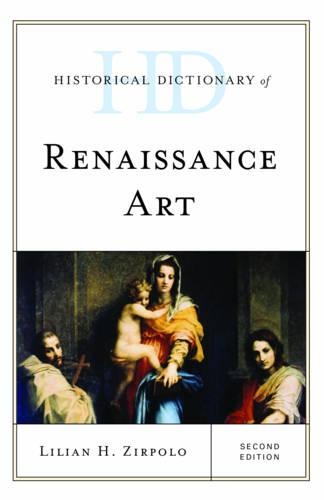
Historical Dictionary of Renaissance Art
(Hardback, Second Edition)
Publishing Details
Historical Dictionary of Renaissance Art
By (Author) Lilian H. Zirpolo
Bloomsbury Publishing PLC
Rowman & Littlefield Publishers
19th August 2016
Second Edition
United States
Classifications
Tertiary Education
Non Fiction
Reference works
709.02403
Physical Properties
Hardback
632
Width 160mm, Height 233mm, Spine 50mm
1098g
Description
The art of the Renaissance is usually the most familiar to non-specialists, and for good reason. This was the era that produced some of the icons of civilization, including Leonardo da Vincis Mona Lisa and Last Supper and Michelangelos Sistine Ceiling, Piet, and David. Marked as one of the greatest moments in history, the outburst of creativity of the era resulted in the most influential artistic revolution ever to have taken place. The period produced a substantial number of notable masters, among them Donatello, Filippo Brunelleschi, Masaccio, Sandro Botticelli, Raphael, Titian, and Tintoretto. This second edition of Historical Dictionary of Renaissance Art contains a chronology, an introduction, and an extensive bibliography. The dictionary section has over 700 cross-referenced entries on artists from Italy, Flanders, the Netherlands, Germany, Spain, and Portugal, historical figures and events that impacted the production of Renaissance art. This book is an excellent access point for students, researchers, and anyone wanting to know more about the Renaissance art.
Reviews
An update to the author's first edition, published by Scarecrow (2008), this historical dictionary endeavorsin this age of the internetto provide an authoritative entry into one of the most popular periods in art history. Independent scholar Zirpolo, an art historian who specializes in the early modern period, provides a condensed overview of the period and its key figures and supplements the text with a chronology of important historical events and a bibliography organized by theme and region. Entries are brief and cross-referenced, with minimal black-and-white illustrations. The author adds content and updates the entries and bibliographies to reflect recent scholarship. The dictionary proper was expanded to include additional minor artists and many from areas outside Italy (notably Portugal) not included in the earlier edition. Zirpolo broadly defines the Renaissance period as spanning roughly 1250 to 1648, which allows her to account for regional differences and cover a significant amount of material from the Italian Baroque period, which may confuse some readers. The work's 60-page classified bibliography is rich with sources. . . .[L]ibraries supporting programs in art history will want to acquire this update and discard the older one. Summing Up: Recommended. All academic audiences; general readers. * CHOICE *
This new edition not only revises and expands the earlier entries, but includes even more artists, especially from areas that were not well represented in the first edition. . . .Among the more than 700 entries are ones on important paintings, themes, and buildings, but the real strength of the book is found in the biographical entries that explain the contributions of the gifted individuals who made this historical period so artistically distinctive. . . .This is a very useful resource to be used either as a stand-alone tool or in conjunction with the many other reference books available on the Renaissance. It is suitable for both general and expert readers in academic, large public, and specialized reference collections. * American Reference Books Annual *
Author Bio
Lilian H. Zirpolo is the founder of Zephyrus Scholarly Publications LLC, the editor of Notes on Early Modern Art Journal, President of the WAPACC Organization, and editor of the WAPACCs Text and Studies Series. She is the author of several books and also published a number of articles, mainly on art patronage and collecting.
